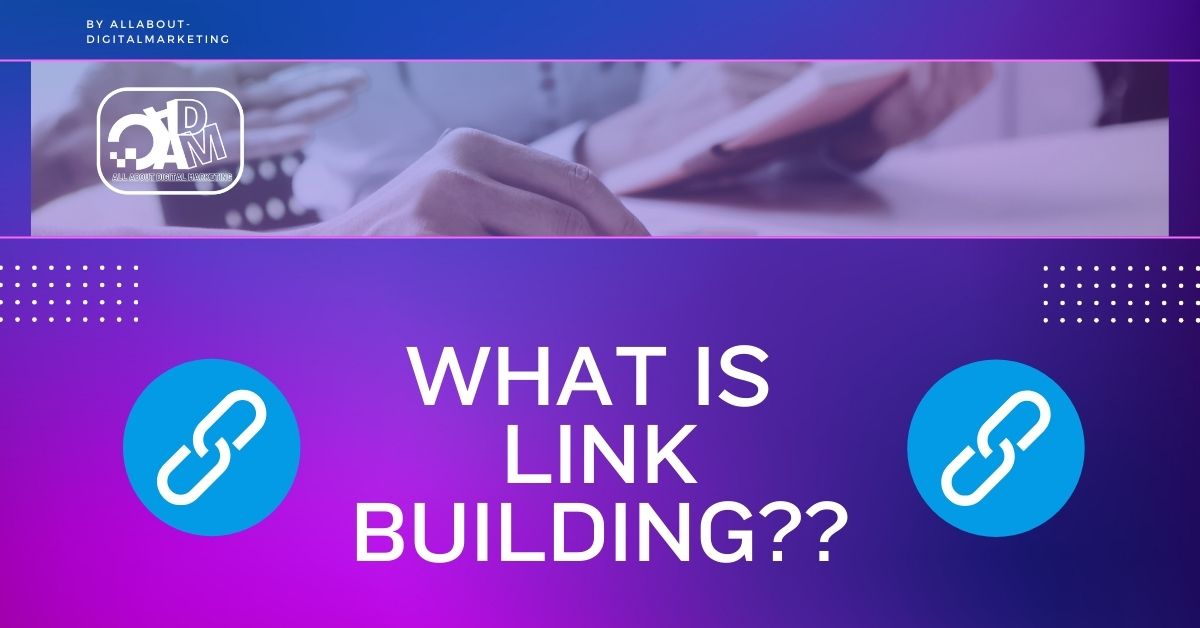Introduction
In the dynamic realm of digital marketing, Link Building stands as a pivotal technique to amplify your business’s online footprint. This technical guide will empower you with the knowledge and strategies required to harness the potential of Link Building for your business’s triumph.
What is Link Building?
Link Building, in its essence, is the art of acquiring hyperlinks from external websites that point to your own. These hyperlinks, known as backlinks, act as bridges that guide users from one web page to another. They serve as a vote of confidence from other websites, affirming the value and authority of your content.
Why Link Building Matters for Businesses
Link Building carries substantial significance for businesses due to several compelling reasons:
1. Elevated Search Engine Rankings: Search engines like Google rely on backlinks as a metric for content quality and authority. Websites with quality backlinks are more likely to attain higher search rankings, thereby increasing their visibility and organic traffic.
2. Trust and Credibility: Backlinks from reputable websites not only boost search rankings but also establish trust and credibility among your audience. When authoritative websites link to your content, it validates your expertise in your niche.
3. Referral Traffic: Backlinks serve as conduits that channel referral traffic from other websites to your own. These visitors are more inclined to convert into customers or subscribers as they already trust the referring source.
4. Brand Exposure: Link Building extends your brand’s reach. When your content is featured on authoritative sites, it exposes your brand to a wider audience, potentially attracting new customers.
Best Practices for Successful Link Building
To master the art of Link Building, adhere to these best practices:
1. Craft Exceptional Content: The cornerstone of effective Link Building is exceptional content. Develop informative, engaging, and shareable content that naturally attracts backlinks.
2. Guest Blogging: Author guest posts for authoritative websites within your industry. In your author bio, include a link back to your site. This not only builds backlinks but also positions you as an industry authority.
3. Broken Link Building: Identify broken links on authoritative websites and offer your content as a replacement. This mutually beneficial strategy helps them fix their links while you gain valuable backlinks.
4. Outreach and Relationship Building: Establish connections with bloggers, influencers, and industry peers for collaborative opportunities. Strong relationships can lead to organic backlinks as they reference your content.
5. Internal Linking: Harness the power of internal links. Link to other relevant pages within your website to enhance user navigation and prolong visitor engagement.
Common Link-Building Mistakes to Avoid
While perfecting Link Building, steer clear of these common blunders:
1. Low-Quality Backlinks: Pursuing low-quality, spammy backlinks can tarnish your website’s reputation and incur penalties from search engines. Prioritize quality over quantity.
2. Anchor Text Overloading: Overloading anchor text with keywords may trigger search engine red flags. Maintain natural and contextually relevant anchor text.
3. Neglecting Mobile Users: Ensure your website and content are mobile-friendly, as a growing number of users access the web through mobile devices.
4. Disregarding User Experience: Slow-loading pages, complex navigation, and intrusive ads can repel visitors and undermine your Link Building endeavors.
Measuring Link Building Success
To evaluate the efficacy of your Link Building efforts, monitor these key metrics:
1. Domain Authority: Keep tabs on changes in your website’s domain authority over time. This metric mirrors your website’s overall credibility in the eyes of search engines.
2. Organic Traffic: Gauge the increase in organic traffic to your site. A greater number of backlinks should correlate with higher organic traffic.
3. Referral Traffic: Observe the traffic originating from referral sources, particularly from websites where you’ve secured backlinks.
4. Keyword Rankings: Track the rankings of your targeted keywords in search engine results. Progress in rankings signifies the effectiveness of your Link Building strategy.
Frequently Asked Questions (FAQs)
Q1. How many backlinks should I aim for?
A1. There’s no fixed quantity of backlinks to target. Concentrate on acquiring high-quality, contextually relevant backlinks rather than a specific number.
Q2. Can I buy backlinks to boost my rankings?
A2. Purchasing backlinks is against search engine guidelines and can result in penalties. Organic acquisition is the best approach.
Q3. How long does it take to witness results from Link Building?
A3. Link Building is a long-term strategy. Initial results may appear within months, but the full impact typically takes a year or more.
Q4. Are all backlinks equally valuable?
A4. No, not all backlinks hold the same value. Backlinks from authoritative and relevant websites carry more weight than low-quality ones.
Q5. What tools can assist in Link Building analysis?
A5. Tools such as Ahrefs, Moz, and SEMrush can aid in analyzing your backlinks and monitoring your Link Building progress.
Conclusion
Mastering the art of Link Building is imperative for businesses striving to establish authority and drive organic traffic. By adhering to best practices, steering clear of common pitfalls, and diligently monitoring your progress, you can harness the potency of backlinks to propel your business to new heights in the digital arena.
Embark on your journey to digital prominence today, and bear witness to the transformative impact of strategic Link Building on your business’s triumph.


1 thought on “What is Link Building?? How Does it Elevate Your Digital Presence?”